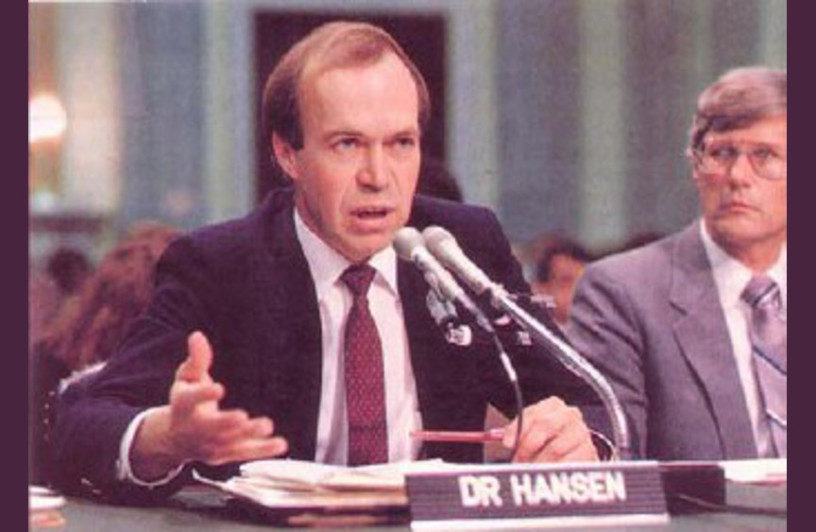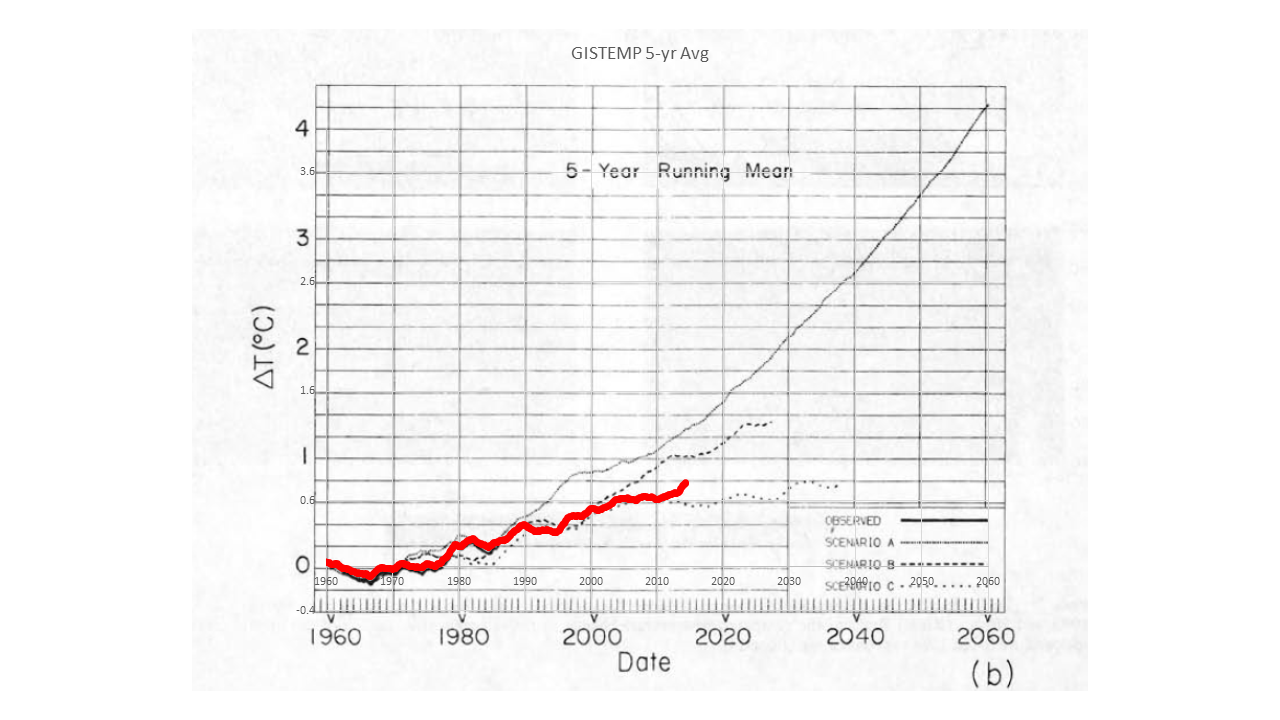The short answer, is not all that well.
On June 23, 1988, NASA scientist James E. Hansen testified before the Senate Committee on Energy and Natural Resources, where he expressed his "high degree of confidence" in "a cause-and-effect relationship between the claimed CO2 induced "greenhouse effect and observed warming."
The 30th anniversary of Mr. Hansen's predictions affords an opportunity to see how well his forecasts have turned out.
In an article in the Wall Street Journal today, climatologist Dr Patrick Michaels and meteorologist Dr. Ryan Maue compare Hansen's predictions to actual reality over the past 30 years. Instead of the gloom and doom we heard in 1988, we have an earth that is only moderately warmer, and closer to Hansen's "scenario C", the bottom graph below, which is overlaid with actual global temperature data in red.
Here's some excerpts from the article by climatologist Dr. Pat Michaels and meteorologist Dr. Ryan Maue:
It turns out that global surface temperature has not increased significantly since 2000, discounting the larger-than-usual El Niño of 2015-16."Thirty years of data have been collected since Mr. Hansen outlined his scenarios-enough to determine which was closest to reality. And the winner is Scenario C. Global surface temperature has not increased significantly since 2000, discounting the larger-than-usual El Niño of 2015-16. Assessed by Mr. Hansen's model, surface temperatures are behaving as if we had capped 18 years ago the carbon-dioxide emissions responsible for the enhanced greenhouse effect. But we didn't. And it isn't just Mr. Hansen who got it wrong. Models devised by the United Nations Intergovernmental Panel on Climate Change have, on average, predicted about twice as much warming as has been observed since global satellite temperature monitoring began 40 years ago..."
"Several more of Mr. Hansen's predictions can now be judged by history. Have hurricanes gotten stronger, as Mr. Hansen predicted in a 2016 study? No. Satellite data from 1970 onward shows no evidence of this in relation to global surface temperature. Have storms caused increasing amounts of damage in the U.S.? Data from the National Oceanic and Atmospheric Administration show no such increase in damage, measured as a percentage of gross domestic product. How about stronger tornadoes? The opposite may be true, as NOAA data offers some evidence of a decline. The list of what didn't happen is long and tedious."
And it isn't just Hansen who got it wrong, models devised by the IPCC have, on average, predicted about twice as much warming as has been observed since global satellite temperature monitoring began 40 years ago.
What about Hansen's other claims? He claimed that the late '80s and '90s would see "greater than average warming in the southeast U.S. and the Midwest." No such spike has been measured in these regions.
In 2007, Hansen stated that most of Greenland's ice would soon melt, raising sea levels 23 feet over the next 100 years. Subsequent research published in Nature magazine demonstrated this to be impossible.
Several more of Mr. Hansen's predictions fizzled. Have hurricanes gotten stronger, as Mr. Hansen predicted? No.
Satellite data shows no evidence of this in relation to global surface temperature.
Have storms caused increasing damage in the U.S.?
No. Data from NOAA show no such increase.
Comment: Although, weather patterns ARE becoming increasingly erratic with so-called 'record-breaking' disasters becoming alarmingly frequent. See our monthly Earth Changes summaries for more detail and the latest: SOTT Earth Changes Summary - May 2018: Extreme Weather, Planetary Upheaval, Meteor Fireballs.
How about stronger tornadoes?
No. In fact, the opposite may be true, as NOAA data offers some evidence of a decline.
The WSJ article:"The list of what didn't happen is long and tedious," say Michaels and Maue.
"On the 30th anniversary of Mr. Hansen's galvanizing testimony, it's time to acknowledge that the rapid warming he predicted isn't happening."
'Thirty Years On, How Well Do Global Warming Predictions Stand Up?'
The article appeared in the Wall Street Journal print edition as
'A Hot Summer on Capitol Hill.'
See also this summary from Willis Eschenbach: The Thirty Year War





Comment: